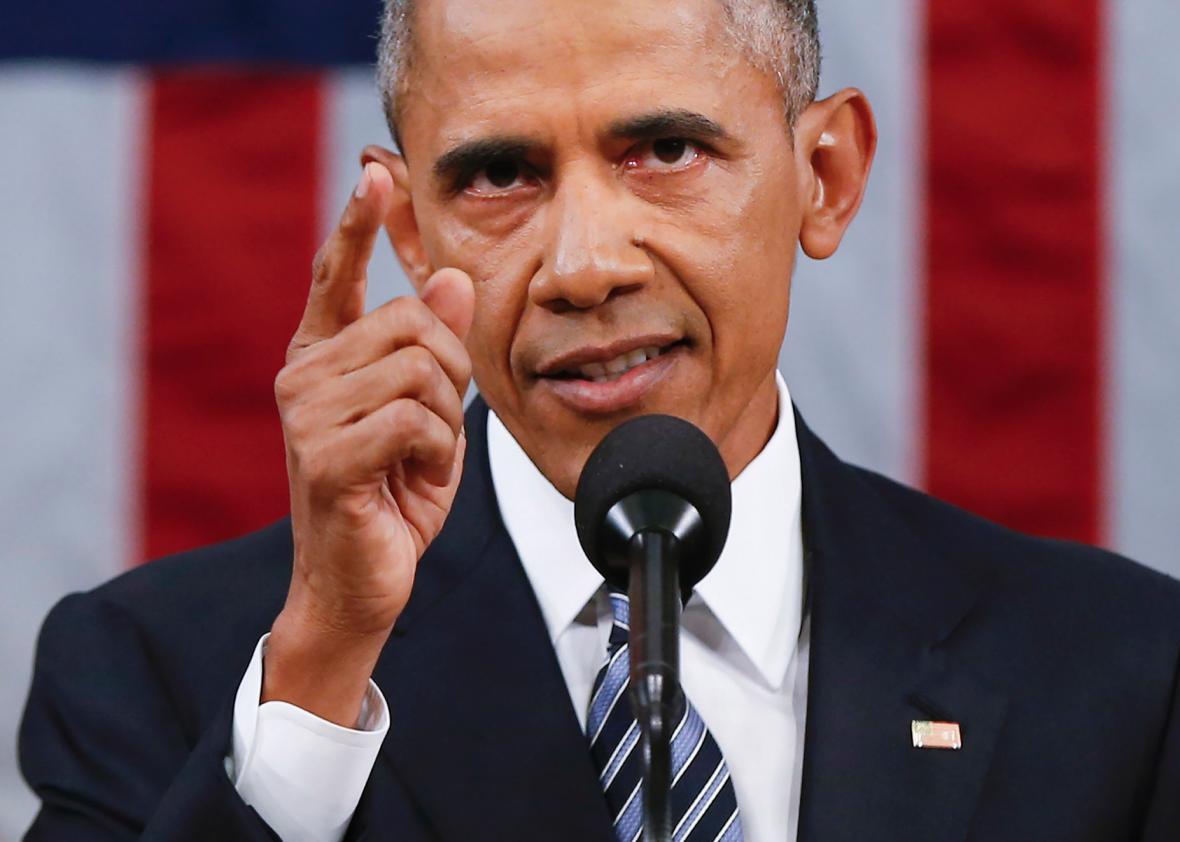In his final State of the Union, President Barack Obama addressed an audience that included Acting Secretary of Education John King, the former New York education commissioner who took over from Arne Duncan at the start of this year. The president touted various accomplishments on the K–12 front—but the reality is a bit murkier. From the speech:
We agree that real opportunity requires every American to get the education and training they need to land a good-paying job. The bipartisan reform of No Child Left Behind was an important start, and together, we’ve increased early childhood education, lifted high school graduation rates to new highs, and boosted graduates in fields like engineering. In the coming years, we should build on that progress, by providing Pre-K for all, offering every student the hands-on computer science and math classes that make them job-ready on day one, and we should recruit and support more great teachers for our kids.
Obama really did change the conversation about early childhood education when he first pushed for an expansion of pre-K in the 2013 State of the Union. But some of his other education goals have proven more elusive. He didn’t mention, for example, that the long-overdue “bipartisan reform” of No Child Left Behind—also known as the reauthorization of the Elementary and Secondary Education Act or, in its latest iteration, the Every Student Succeeds Act—is in many ways a direct rebuke to his administration’s extremely hands-on education policies, with a dialing-back of federal involvement in favor of more local control. States are now no longer required to tie teacher evaluations to student test scores—a signature education-reform practice that Obama has endorsed.
Obama also touted the steady climb in high school graduation rates, which hit a “new record high” of 82 percent in the 2013–14 school year—but he left out the sometimes-slippery methods high schools have employed to achieve this stunning milestone (like, say, misclassifying dropouts as “transfers”) and what, if anything, graduating from high school has to do with the ability to hold down a job or, you know, read.
Throughout, Obama gave some nods to the importance of STEM (science, technology, engineering, and math), from the top of the speech, when he listed “helping students learn to write computer code” as one of his top policy priorities for the year ahead, to the peroration, when he detected the greatness of America “in the Dreamer who stays up late to finish her science project, and the teacher who comes in early because he knows she might someday cure a disease.”
The president also paid lip service to the role of technology in leveling educational opportunities when he spoke of “bold new steps to get more students and low-income Americans online”—a goal shared by one of Michelle Obama’s guests, Satya Nadella, the CEO of Microsoft, a company that, the White House website reminds us:
has been a leader in expanding access to computer science in K-12 classrooms, and in Teach.org, a private public partnership to increase awareness of and support for the teaching profession. In September, the company announced a new $75 million effort to expand computer science education, including opportunities for engineers from Microsoft and other companies with teachers to team-teach computer science.
And oh, yeah—its founder, Bill Gates, happens to be a titan of education-reform philanthropy. But will Gates’ expensive efforts to overhaul our educational system succeed—and will Obama’s? To judge by the bipartisan repudiation of Obama’s K–12 policies in the new ESEA bill, it seems Obama gets a passing grade at best.
